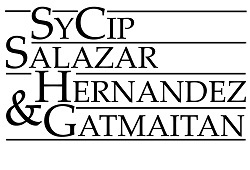NFTs have been in the news a lot lately, and there has been a lot of excitement around their potential. But what are NFTs, and what implications do they have for intellectual property in the Philippines?
We spoke with Vida M. Panganiban-Alindogan, Partner of SyCip Salazar Hernandez & Gatmaitan (SyCipLaw) and Head of the Firm’s Intellectual Property Department, to find out more about NFTs and IP in the Philippines.
Conventus Law: Non-Fungible-Tokens (NFTs) sales have increased from US$100m in 2020 to US$22b in 2021. What is the relationship between NFTs and IP?
SyCip Salazar Hernandez & Gatmaitan (SyCipLaw): There is a functional interaction between NFTs and intellectual property. Although NFT buyers do not acquire the IP rights associated with the item underlying the NFT, it is arguable that NFTs may still be subject to IP protection, including copyright, design patent, and trademark rights.
Under the Philippines’ IP regime, does the ownership of an NFT carry with it the transfer of copyright ownership to the asset? If not, why is that?
Ownership of an NFT generally does not carry with it the transfer of copyright ownership to the underlying asset (i.e., digital work). NFTs represent data on a blockchain, which does not constitute an original work of authorship under the intellectual property laws of the Philippines.
So, while the sale of NFTs wouldn’t appear to threaten the trademark rights of an IP owner, more and more individuals and entities looking into digital assets are seeking trademark registration to better protect their brands in the digital world. What advice would you give those trademark owners?
“NFTs present risks and opportunities in the IP landscape, particularly since it is still in its infancy. There have been a lot of issues surrounding the rights of NFT creators vis-à-vis intellectual property rights holders. IP lawyers must thus be mindful of these potential issues to ensure that IP assets, in whichever form, are adequately protected and defensively positioned (…)”

Vida M. Panganiban-Alindogan, Partner SyCipLaw
The Philippine trademark system follows a first-to-file rule, i.e., the party who first filed the application for the registration of the mark enjoys priority over the subsequent applicants. Thus, to ensure protection, it would be prudent for a trademark owner to cause the registration of its trademark, including its digital assets. This allows brand owners to better control, monitor, and protect the use of their IP on the blockchain.
What impact do you foresee NFTs having on IP, and what will this mean for IP lawyers?
NFTs present risks and opportunities in the IP landscape, particularly since it is still in its infancy. There have been a lot of issues surrounding the rights of NFT creators vis-à-vis intellectual property rights holders. IP lawyers must thus be mindful of these potential issues to ensure that IP assets, in whichever form, are adequately protected and defensively positioned, e.g., trademark registrations that cover NFTs provide an IP owner with legal basis to sue infringers and therefore have better brand protection; licensing agreements must specifically define the respective rights of the parties to maximize the profile, goodwill and commercial value of the IP; and assignment agreements must specifically define the IP being assigned esp. if copyright issues are involved (i.e., whether assignee would be entitled to the rights related to the original work).
It was announced recently that IPwe and IBM are seeking to transform corporate patents with next generation NFTs using IBM blockchain. In relations to the Philippines, what impact could this have?
IBM’s partnership with IPwe to create a platform powered by the IBM Blockchain will allow members of the patent community to engage, transact, buy, license, finance, sell, and commercialize patents. As stated by Erich Spangenberg, the CEO of IPwe, the expectation is that this platform will benefit not only large enterprises that have significant intellectual property, but it will bring new opportunities to small and medium enterprises and even individual intellectual property owners.
Intellectual property, being intangible assets, have been fraught with challenges in terms of management, valuation, and commercialization. Hopefully, the introduction of NFTs into this space will address these challenges by making it easier for IP stakeholders and owners to understand, and subsequently, trade and commercialize their IP assets.
According to the Asian Development Bank, small and medium enterprises (SMEs) are the backbone of Asian economies, small and medium-sized enterprises (SMEs) make up more than 96% of all Asian businesses, providing two out of three private-sector jobs on the continent. In the Philippines, SMEs and micro enterprises combined make up 99.6% of establishments in the country. Therefore, the introduction of this new platform will provide more opportunities for SMEs to thrive, grow, and even compete against larger, longer-established corporations.
It is said that tokenization of IP will help position patents to be more easily sold, traded, commercialized, or otherwise monetized and bring new liquidity to this asset class for investors and innovators. How do you see this taking shape in the near future?
The advantages of tokenizing patent assets have been discussed in detail by a number of players in the patent space. Apart from making the sale, trade, and commercialization of patents simpler, many also believe that tokenization will provide greater transparency and make transactions more cost-effective. It has also been said that NFTs can provide an opportunity for fractional ownership in patent assets, allowing smaller investors to purchase pieces of patents as NFTs. Also, because blockchain data cannot be deleted, the technology may help with automating royalty collecting methods and keeping records of revenues associated with various patent assets. Tokenization of patents may also prove helpful for collecting prior art or patent family data. Tokenization could help with collecting and maintaining data related to prior art submitted and considered in these various proceedings.
However, even with the identified benefits of tokenization, a few concerns have also been raised that may impact on realizing such a system. Some of these concerns are the lack of laws or regulations, privacy issues, confidentiality of royalty streams, duplication of work (the patent office, for example, keeps public records with patent assignment and other information), inaccurate records keeping.
The possibilities offered by the tokenization of IPs are truly unlimited. And with that, a similar number of questions and issues arise. It will be interesting to see how the practice of trading patents as NFTs evolves and takes shape in the long term.
“As demonstrated by the Miramax case, it is likely that existing agreements (e.g., licensing agreements) were entered into without taking NFTs into consideration. Therefore, it would be prudent for the parties to revisit the applicable terms and conditions of their existing agreements to ensure that the intention, rights, and obligations of the contracting parties are reflected in the agreement”.
Vida M. Panganiban-Alindogan, Partner of SyCipLaw
Does the Bangko Sentral ng Pilipinas (BSP) view NFTs differently in terms of virtual assets whether they are from an in-game token or not. How are these different NFTs regulated?
Based on the primer issued by the BSP, Non-fungible tokens or NFTs have been described to represent a class of virtual asset (VA) that differs from traditional cryptocurrencies in that an NFT establishes ownership of a unique asset (digital or physical). This characteristic of “uniqueness” captures the non-fungibility aspect of NFTs. Some of the most used NFTs involve digital arts, music, and in-game tokens. In contrast, cryptocurrencies such as bitcoin, function in an opposite manner, wherein one person’s bitcoin would be identical (in terms of price/value) to another person’s bitcoin, providing the interchangeability or fungibility aspect.
While NFTs may broadly fall within the definition of VAs, BSP Circular No. 1108 dated 26 Jan 2021 on Guidelines for Virtual Asset Service Providers, specifically excludes digital units of exchange used as in-game tokens in such regulation. The BSP’s attention is positioned on the VASPs that provide consumers with the means to exchange fiat money to cryptocurrency in order to acquire NFTs, as well as the redemption back to fiat money. This is in line with the Financial Action Task Force (FATF) Guidance on a risk-based approach to VAs and Virtual Asset Service Providers. It is important to note, however, that the use of virtual asset as a form of payment for goods or services may fall within the activities of an Operator of Payment System (OPS), pursuant to BSP Circular No. 1049 dated 09 Sep 2019.
What should NFT creators be aware of in terms of IP when trading in NFTs in the Philippines?
Because NFT technology is in its infancy, there are few laws or regulations dealing with them. Thus, there are significant risks involved, such as fraud, financial loss and other scams. There is also the accompanying challenge in enforcing legal recourse against companies registered and operating outside the Philippines.
Does the Bangko Sentral ng Pilipinas (BSP) view NFTs differently in terms of virtual assets whether they are from an in-game token or not. How are With regards to rights allocation, is there a need to revisit existing agreements that involve IP assets in light of NFTs? (For example, with the Miramax LLC v. Tarantino et al, C.D. Cal., No. 2:21-cv-08979, 11/16/21 in mind). different NFTs regulated?
As demonstrated by the Miramax case, it is likely that existing agreements (e.g., licensing agreements) were entered into without taking NFTs into consideration. Therefore, it would be prudent for the parties to revisit the applicable terms and conditions of their existing agreements to ensure that the intention, rights, and obligations of the contracting parties are reflected in the agreement. This will help to avoid issues and uncertainties in the future that could lead to a costly litigation.
The Miramax case also highlights the importance of negotiating and drafting licensing agreements that involve IP assets considering NFTs. The right to develop, market, and sell NFTs should now form part of the discussions with sufficient context and detail so that the parties’ rights over the same form part of the written agreement.
IP owners need to also include the metaverse to places to watch for possible infringement, specifically, trademark or copyright infringement in the form of NFTs. The recent case of Hermès International v. Mason Rothschild in the US whereby Hermès claims that NFTs called METABIRKINS (alluding to the Hermès trademarked BIRKIN® handbag) infringes and dilute Hermès trademarks. Do you foresee an increase in similar cases? Are you seeing similar cases in the Philippines?
The rise of NFTs will inevitably result in a rise of issues surrounding the same, including that of infringement particularly in the absence of specific laws addressing the same. While there is yet no case in the Philippines involving issues similar to that of the METABIRKIN case, there is no doubt that the decision in the said case may ultimately find relevance in the Philippines since US case law, though not binding, is usually considered as persuasive authority.



